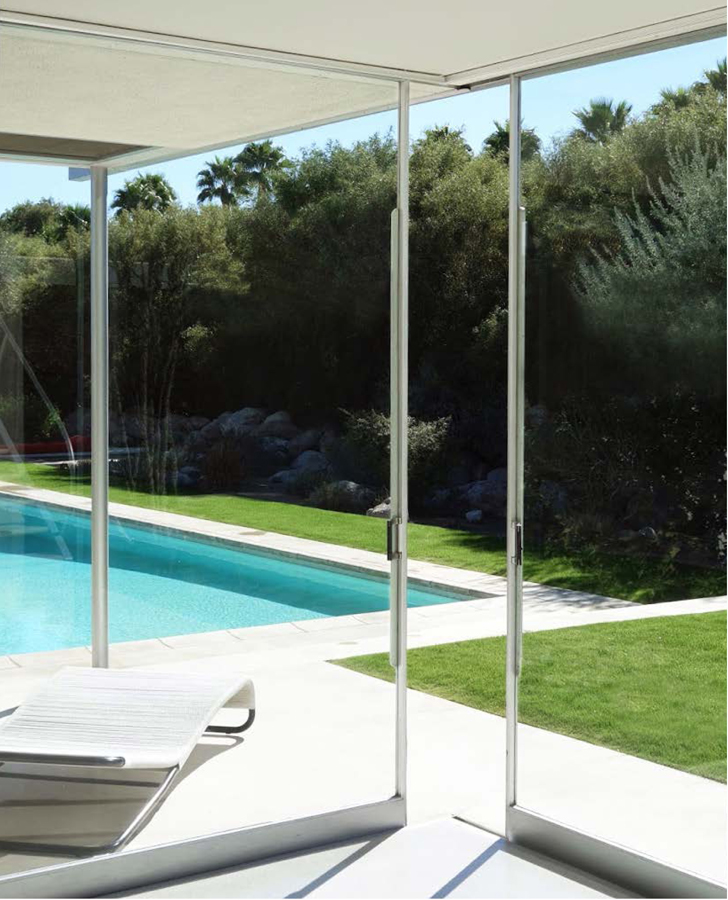Rise of the Aluminum Slider - Page 2
 |
|
|
"Then, between 1945 and 1950, doors with rollers in the bottom frame came on the market," says Raymond Neutra. "These doors had very thin frames and changed the look of modern houses.
"With a bottom roller, you don't have the need for such heavy beams to hold the door in [place]," he continues. "It led to a more reliable product."
Also contributing were the advances in fabrication technique brought on by manufacturing to support the military in World War II and the Korean War. In fact, the CA-Modern story pinpoints the growth of the slider to the year 1953 and the end of the latter war.
Several industry experts also contribute to the story, including Neal Anderson of Arcadia Inc., who says aluminum "was more affordable than steel because it was an extrudable product." Anderson refers to the process by which the material can be shaped and formed as opposed to steel, which had to be handcrafted.
Before that, early Eichler homes had used wood mullions to frame glass walls and doors, such as in the groundbreaking Sunnyvale Manor subdivision of 1949 and a custom model found on the Stanford campus.
With the postwar improvements in technology and materials, companies manufacturing the new sliders began springing up all over Los Angeles County: Steelbilt in Gardena, Panaview in North Hollywood, Malibu Manufacturing in L.A., Miller Manufacturing in Burbank, and of course Arcadia in—where else?—Arcadia.
Dion Neutra, who partnered with his father in Silver Lake, said his father began incorporating sliders "in almost every design."
"During the '50s we were specifying Steelbilt [doors], a door that still functions in my house today, at 65 years," he recalls. "They used bronze rollers, which have still performed without lubrication all this time."
Likewise, Eichler architectural firms Anshen and Allen and Jones & Emmons used the improved functionality brought about by the aluminum slider to fully realize the 'organic' integration of interior and exterior environs so critical to mid-century modern homes.
For more on the aluminum slider and our story 'On the Threshold of Discovery,' and for a sneak preview of the Summer issue of CA-Modern, click here.
By the way, Arcadia, the sliding door Eichler installed in nearly every modern home he built, is one of ten sliding-glass door companies and models profiled in CA-Modern's accompanying side story on the best of sliding-glass doors today, 'Technology Opens the Door,' available only in the print edition of the Summer '15 CA-Modern.




